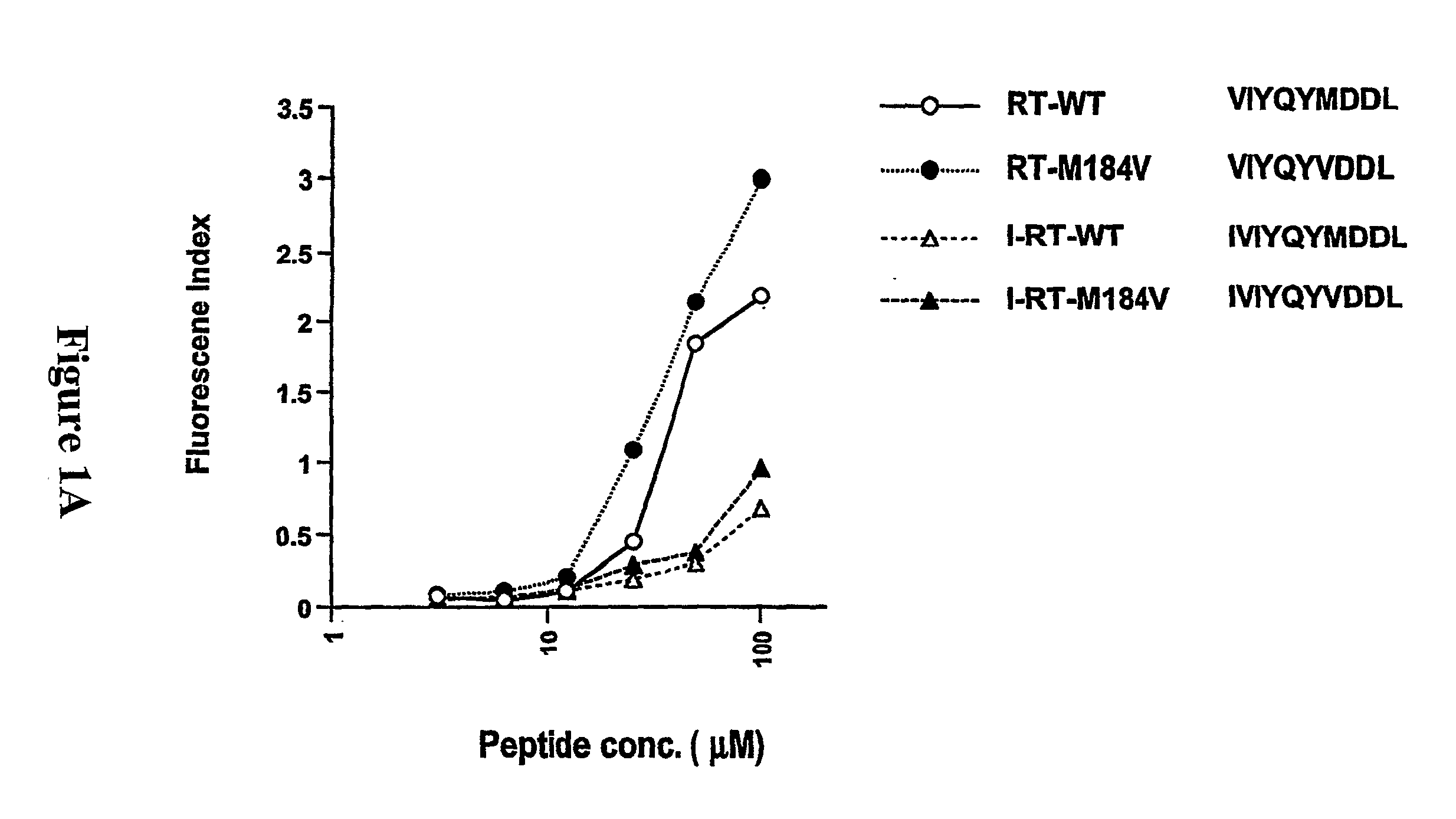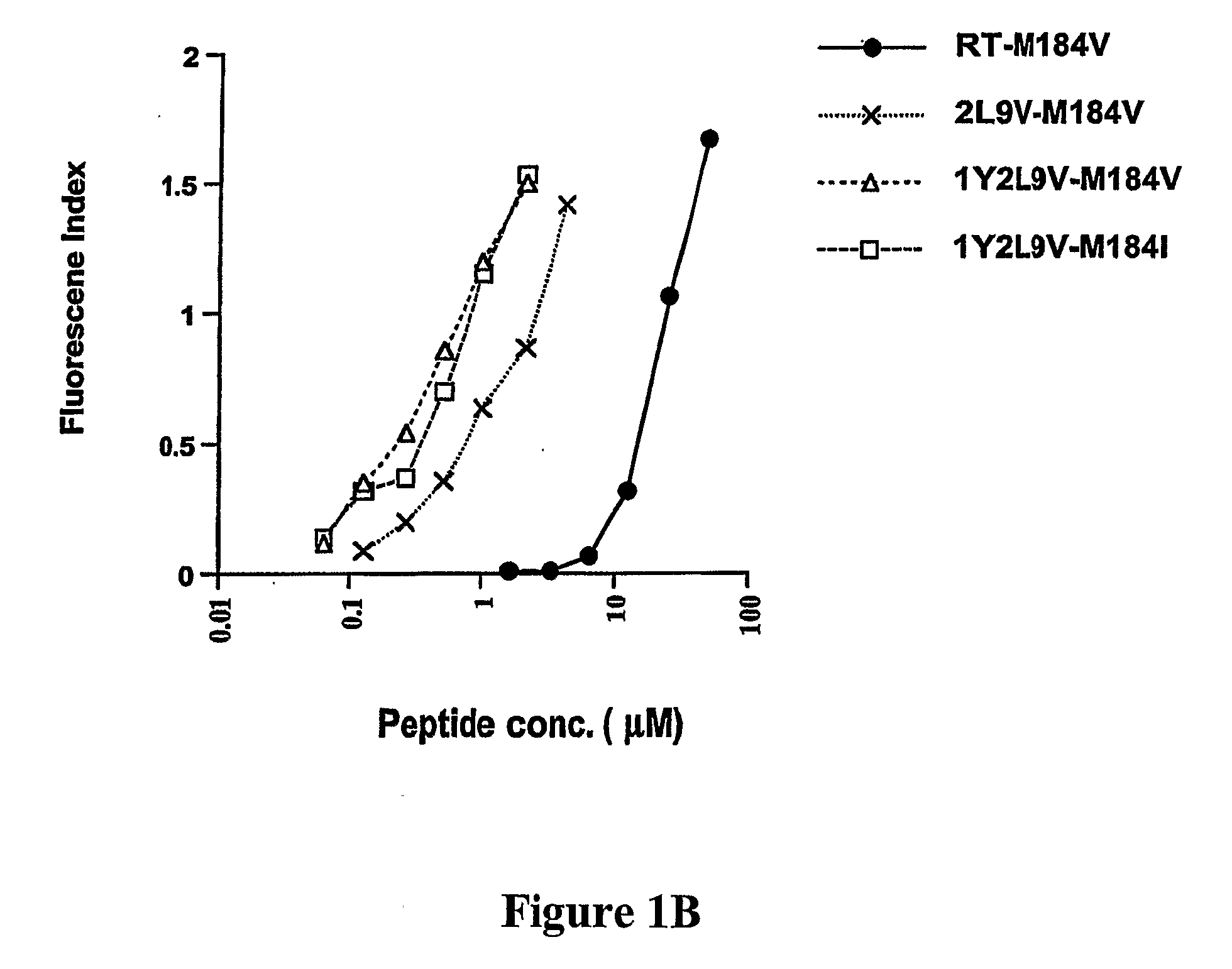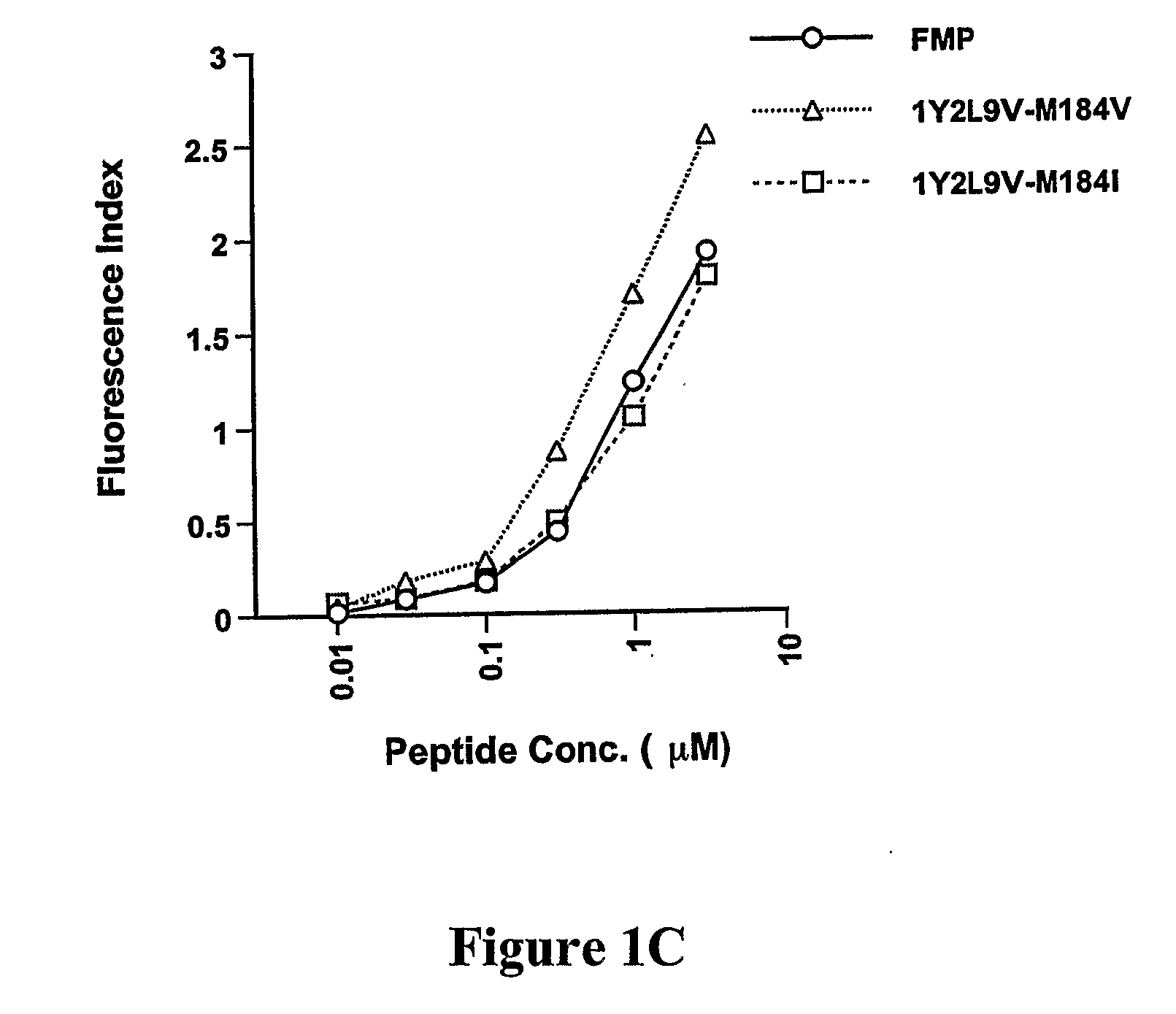Vaccines and methods for prevention and treatment of drug-resistant hiv-1 and hepatitis b virus
a technology of hepatitis b virus and vaccines, applied in the field of immunology and genetics, can solve the problems of no cure for aids, decline in cd4 count, and subsequent development of opportunistic infections or aids related malignancies, and achieve the effect of lowering viral load and viral load in the hos
- Summary
- Abstract
- Description
- Claims
- Application Information
AI Technical Summary
Benefits of technology
Problems solved by technology
Method used
Image
Examples
example 1
5.1. Example 1
Material and Methods
5.1.1. Synthetic Peptides
[0277]Peptides were prepared on an automated multiple peptide synthesizer (Symphony; Protein Technologies, Inc.) using Fmoc chemistry. Peptides were purified by reverse-phase HPLC. Subsequently peptide composition and concentration were confirmed by amino acid analysis and where necessary, sequences were confirmed on an automated sequencer (477A; Applied Biosystems, Foster City, Calif.). Some peptides were also purchased from Multiple Peptide Systems (San Diego, Calif.).
5.1.2. Cells
[0278]The C1R.AAD cell line (HMYC1R transfected with the HLA chimeric molecule containing α1 and α2 domains from human HLA-A2.1 and α3 from mouse H-2Dd) has been previously described (Newberg et al., J Immunol 1996, 156:2473-2480; Sarobe et al., J Clin Invest 1998, 102(6):1239-1248). Cell lines were maintained in RPMI containing 10% FCS, 1 mM sodium pyruvate, nonessential amino acids (Biofluid, Rockville, Md.), 4 mM glutamine, 100 U / ml penicillin,...
example 2
5.2. Example 2
RT (179-187)-Substituted Peptides Binding to HLA-A2.1 Molecules
[0284]To develop CTL to an epitope spanning the drug resistance mutation site that bound to HLA-A2, the binding of wild type and mutated peptides to HLA-A2 was measured. The T2-binding assay (Nijman et al., Eur J Immunol 1993, 23:1215-1219; Sarobe et al., J Clin Invest 1998, 102(6):1239-1248) was utilized to assess whether the M184V mutation of RT (179-187), RT-M184V, possessed the ability to bind the HLA-A2 molecule. This protocol involved measurement of the cell surface stabilization of HLA-A2.1 molecules on Transporter of Antigenic Peptides (TAP)-deficient T2 cells following incubation with each peptide (FIG. 1). Several candidate peptides using epitope enhancement strategies were studied. Based on our previous results regarding epitope-enhancement of RT-WT (See PCT / US2004 / 009617; Okazaki et al., J Immunol 2003, 171(5):2548-2555), and the results of Harrer et al. on peptides with the wild-type sequence (...
example 3
5.3. Example 3
Recognition of RT-Variant Peptides by RT-WT-Specific CTL Lines from HHD-2 Transgenic Mice
[0287]To explore the hypothesis that a best fitted anchor- or P1Y-substituted peptide might be able to induce a RT-M184-specific CTL repertoire, we first tested the recognition pattern of RT-WT-specific CTL developed from HLA-A2 transgenic mice. As shown in FIG. 2, the RT-WT-specific CTL recognized RT-WT or I-RT-WT but neither RT-M184V nor I-RT-M184V. This result in transgenic mice mirrored the previous finding of Harrer et al. involving human RT-WT-specific CTL (Harrer et al., J Infect Dis 1996, 173(2):476-479). Together, these results suggest that the lamivudine-resistance mutation abolishes recognition by an established CTL response. Furthermore, this result means that the experiment employing HLA-A2 restricted antigen specific CTL from HHD-transgenic mice is a good model of a human CTL response.
PUM
| Property | Measurement | Unit |
|---|---|---|
| concentrations | aaaaa | aaaaa |
| concentrations | aaaaa | aaaaa |
| concentration | aaaaa | aaaaa |
Abstract
Description
Claims
Application Information
 Login to View More
Login to View More - R&D
- Intellectual Property
- Life Sciences
- Materials
- Tech Scout
- Unparalleled Data Quality
- Higher Quality Content
- 60% Fewer Hallucinations
Browse by: Latest US Patents, China's latest patents, Technical Efficacy Thesaurus, Application Domain, Technology Topic, Popular Technical Reports.
© 2025 PatSnap. All rights reserved.Legal|Privacy policy|Modern Slavery Act Transparency Statement|Sitemap|About US| Contact US: help@patsnap.com



